Space One Eleven is a visual arts organization that provides professional opportunities for artists, creates a forum for public understanding of contemporary art, and offers arts education to area youth. Space One Eleven values freedom of expression and produces provocative exhibitions and public programs that invite dialogue and promote conversation. Throughout its history, it has engaged directly with issues of religious tolerance, racial equality, and social justice. The organization operates on the belief that strong cross-cultural, community-based arts programs create a forum for exchange between artists and the public.
Space One Eleven
- Location
- Birmingham, AL
- Grant Cycle
- Spring 2020
- Amount
- $80,000
- Type of Grant
- Multi-year Program Support
- Website
- spaceoneeleven.org ↗
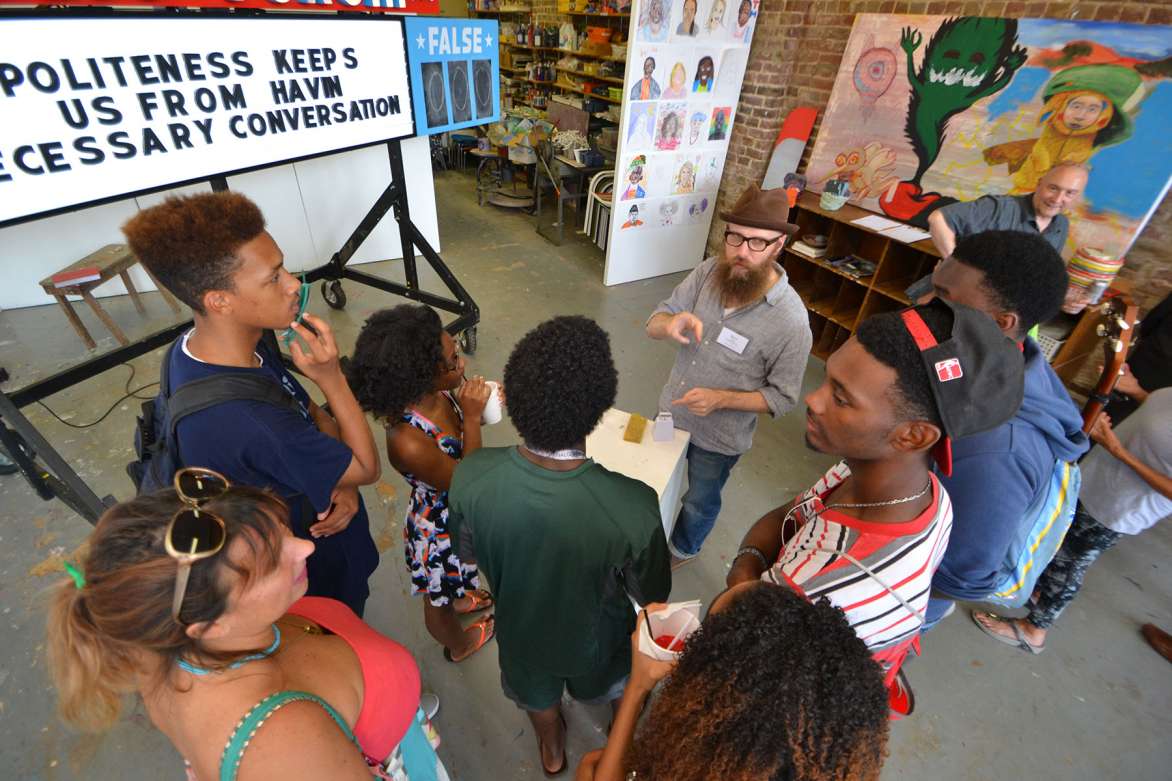
In 2014, Space One Eleven invited the public to play PUBLIC FORUM, with artist in residence, Steve Lambert. Designed to create a large scale forum around current events and fundamental myths, PUBLIC FORUM invites you to vote whether the statement on the marquee is true or false. Imagine a mix of Family Feud, Let’s Make a Deal, the front page of the newspaper, and the best college seminar class you ever took, while discussing topics important to you. With statements like “Slavery is over, My voice is heard & I have equal rights, and Football is more important than Jesus,” Lambert pulled Birmingham locals into a gameshow-like environment to spark these conversations.
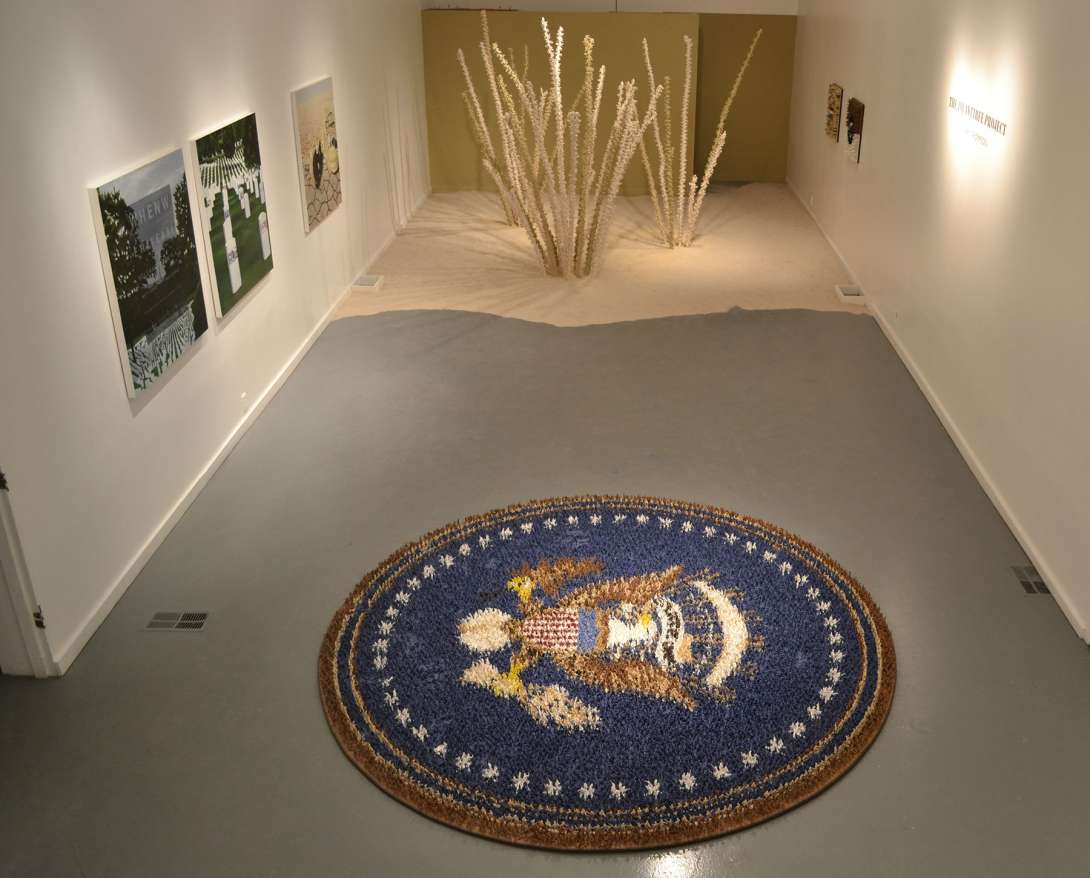
“The Infantree Project,” April 2016, was created by Larry Thompson as an installation that gives voice to a societal and political issue that has implications for all citizens, not only of this country, but globally, while exploring the disconnect our country has about current wars. Our news of what’s going on in these wars is often an afterthought, more attention is given to who was recently voted off of a reality television show than to the humans who died on a given day in the context of a war. A certain segment of our population, all too often persons of minority groups and the economically disadvantaged in our society, are the ones bearing the brunt of this service in the name of our country while the rest of us go about our business-insulated and disconnected from the destruction. This project is a response to that and to remind us what is happening to soldiers, their families, and the citizens of foreign countries where we are engaged. People are dying every day and we shouldn’t forget them. People are having lives destroyed, and bodies and minds maimed and we shouldn’t forget them. Yet, sadly, the rhythm of our lives drowns out the screams.
“The Infantree Project,” April 2016, was created by Larry Thompson as an installation that gives voice to a societal and political issue that has implications for all citizens, not only of this country, but globally, while exploring the disconnect our country has about current wars. A certain segment of our population, all too often persons of minority groups and the economically disadvantaged in our society, are the ones bearing the brunt of this service in the name of our country while the rest of us go about our business-insulated and disconnected from the destruction.
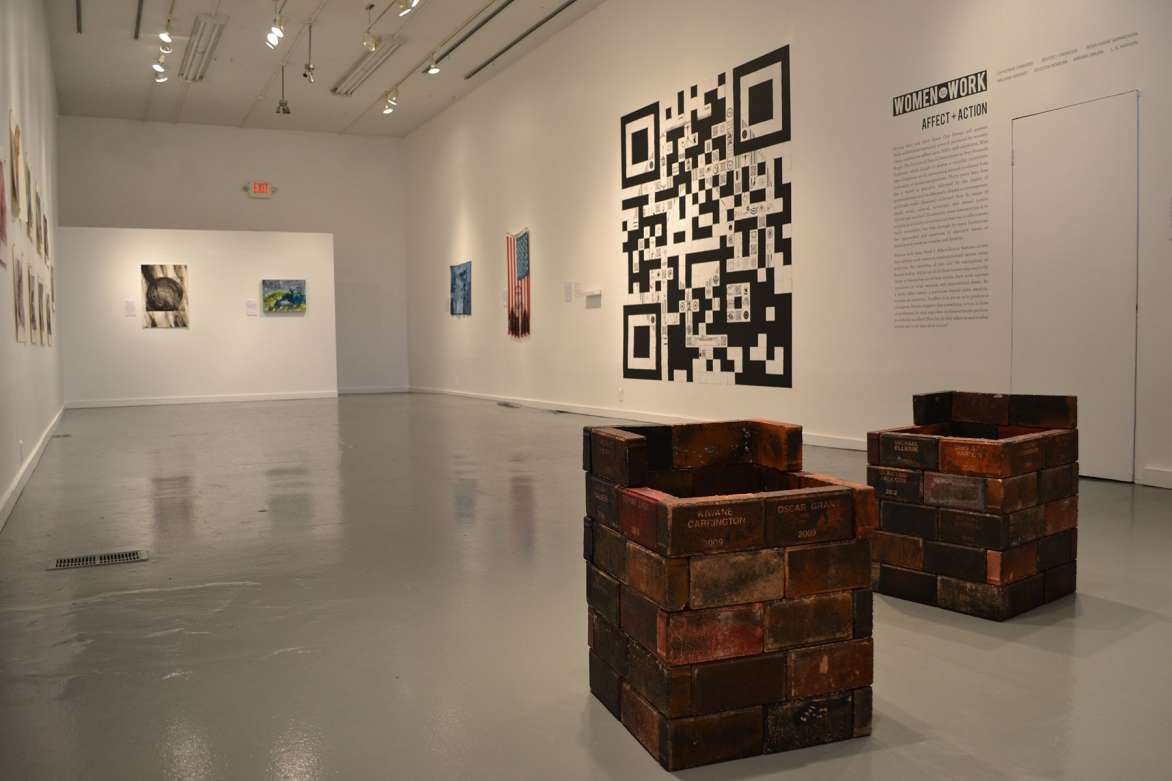
“Women with their Work I: Affect + Action,” September 2017. The first exhibition in an all-women exhibition series was co-curated by SOE’s CEO and Co-Founder Peter Prinz and Dr. Jessica Dallow. Artists Catherine Cabaniss, Bevery Erdreich, Rosa Naday Garmendia, Melanie Grinney, Celestia Morgan, Miriam Omura, and L.A. Watson addressed issues including institutionalized racism, pollution, war, and the subjugation of female bodies.
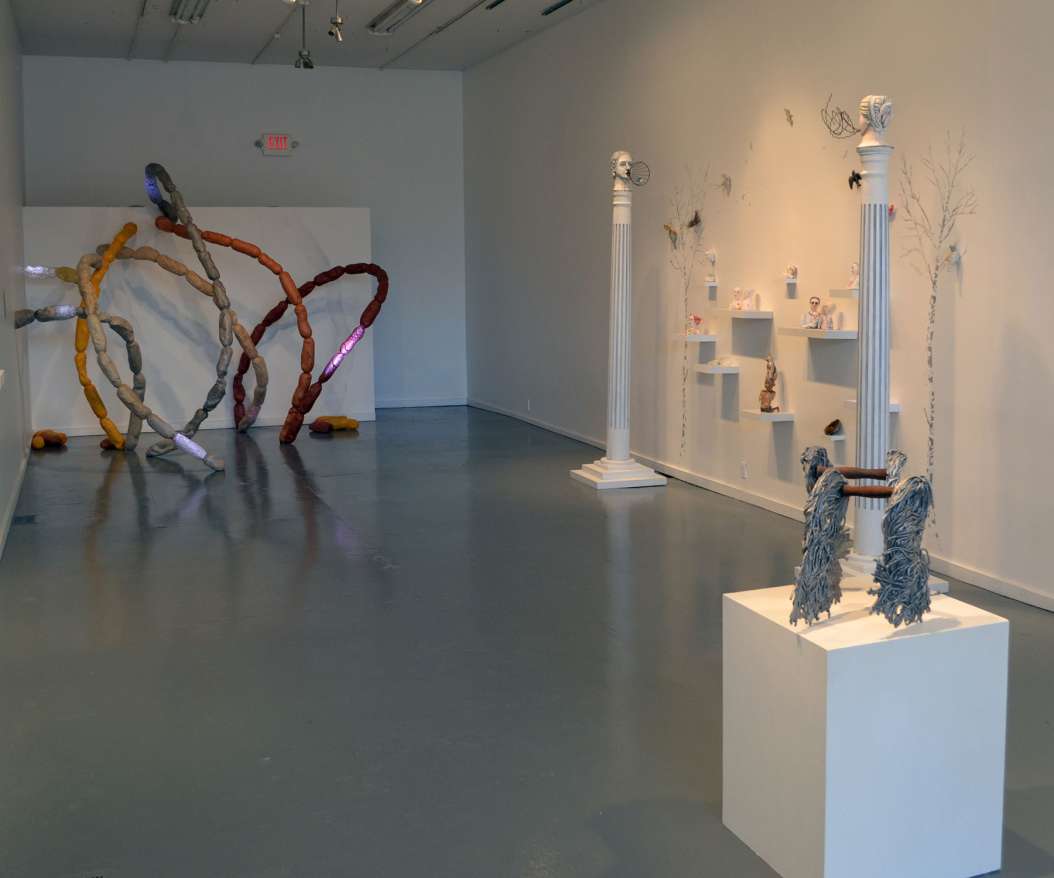
“Women with their Work III: Materiality,” September 2018, was co-curated by SOE’s CEO and Co-Founder Peter Prinz and Dr. Jessica Dallow. Artists Sara Garden Armstrong, Erin Cunningham, Camille Goulet, Janice Kluge, and Beili Liu mark the final installment of the Women with their Work series and the thirteenth anniversary of SOE’s presentation of “Blue Angel: The Decline of Sexual Stereotypes in Post-Feminist Sculpture” by revisiting the physical form as well as the idea of “women’s work” in today’s art world.
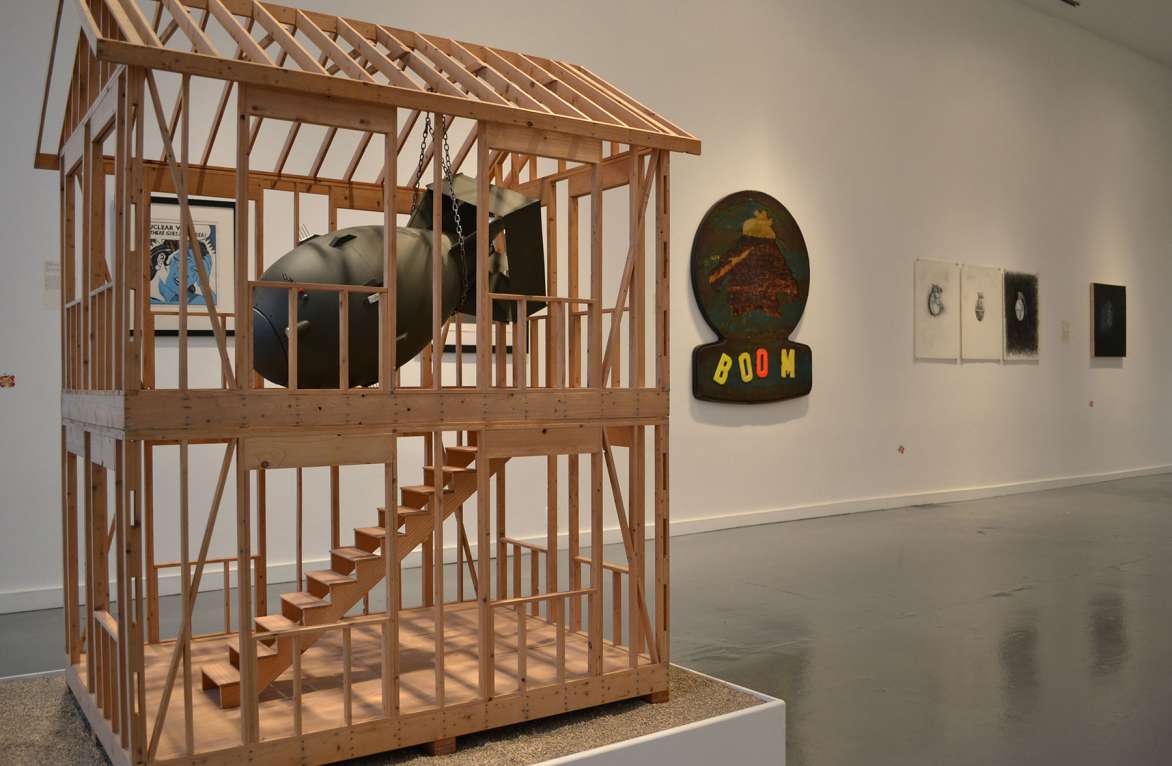
In “The Bomb,” January 2019, guest curator Larry Jens Anderson and artists Temme Barkin-Leeds, Jim Braude, Sarah Emerson, Tom Ferguson, Richard Mafong, Kieran Barnett Moore, Chris Revelle, Claudia Smigrod, Jonathan Terranova, Brad Thomas/Thomas Gleaner, Mark Vallen, and Stephen Wilkes used irony and humor to draw similarities between a post-World War II childhood and an adulthood concerned with suicide bombers, IEDs, and who has a nuclear bomb but should not.
2014
The Cantor Arts Center at Stanford University acquired the Andy Warhol Photography Archive from The Andy Warhol Foundation for the Visual Arts in 2014. The collection of 3,600 contact sheets and corresponding negatives represents the complete range of Warhol’s black-and-white photographic practice from 1976 until his unexpected death in 1987.